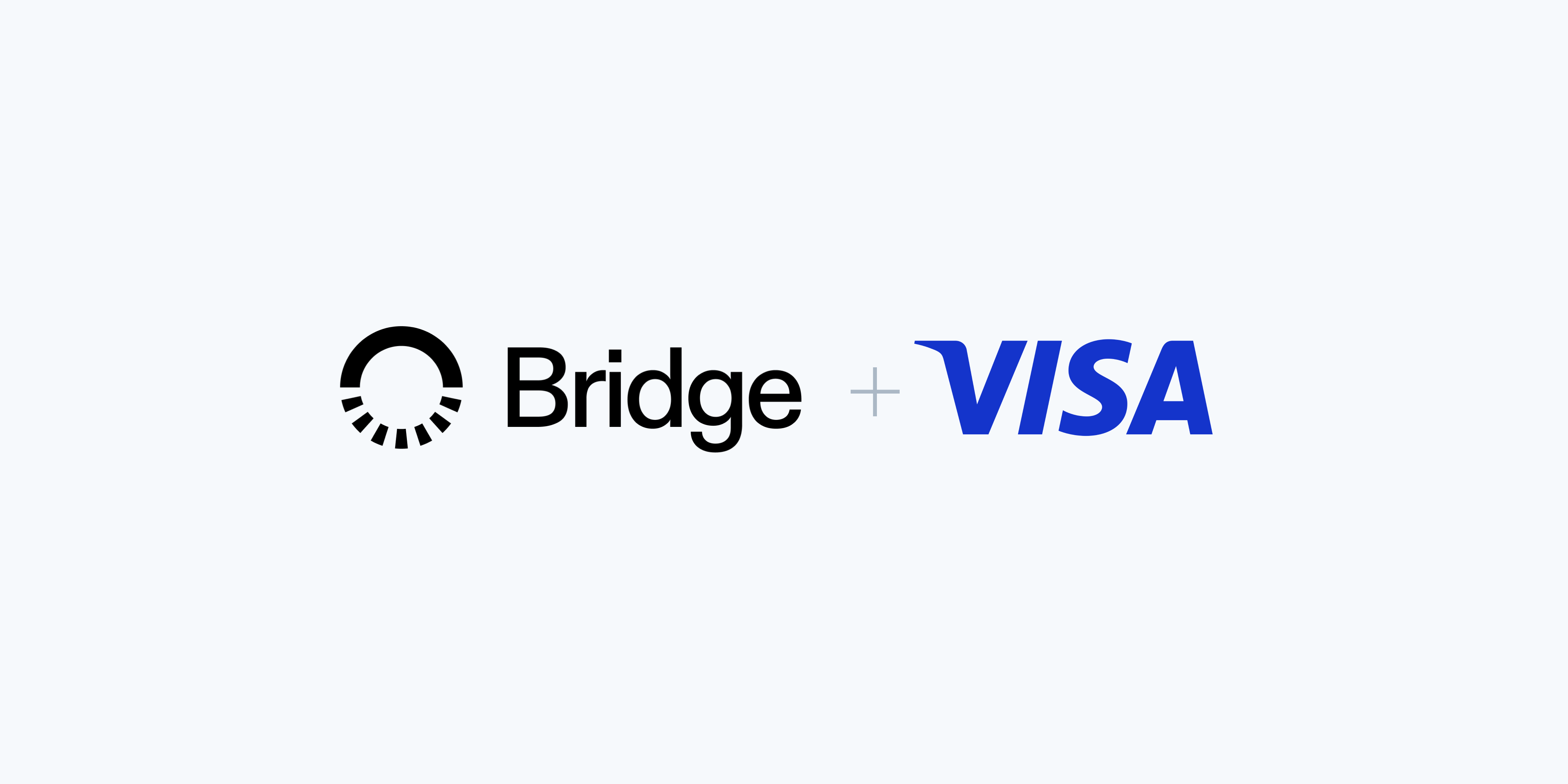The world of finance is undergoing a quiet revolution. For decades, traditional financial institutions, often called “TradFi”, have dominated global markets with established systems and time-tested processes.
Yet, in recent years, a new wave of innovation has begun to reshape the industry’s very foundations. At the heart of this transformation is blockchain technology, a once-niche concept that is now being embraced by financial giants such as JPMorgan, Visa, and HSBC.
What’s driving this shift? Stablecoins, distributed ledger technology, and the promise of faster, cheaper, and more transparent transactions are prompting even the most conservative players to rethink their strategies. From cross-border payments in Latin America to the tokenization of assets and the rise of stablecoin-backed credit cards, blockchain is no longer a distant experiment; it’s becoming an integral part of the financial ecosystem.
This article aims to discuss why big players are embracing blockchain, how companies like Ripple and Circle are shaping the future of payments, and what these changes mean for financial inclusion, operational efficiency, and the everyday consumer. As we explore the evolving landscape where tradition meets innovation, one thing is clear: the future of finance is being built today, and blockchain is at its core.
Why Are Credit Card Companies Using Stablecoins and Blockchain?
Stablecoin integration by credit card companies is a strategic response to the evolving financial landscape. Stablecoins like USD Coin (USDC) and Tether (USDT) provide a stable medium of exchange on the blockchain, addressing the volatility that has long deterred mainstream adoption of cryptocurrencies like Bitcoin. For credit card companies, stablecoins offer a pathway to faster, cheaper, and more transparent transactions, particularly for cross-border payments, which are often slow and expensive in traditional systems.
Blockchain technology enables near-instant transaction settlement, a stark contrast to the days-long clearing process of traditional credit card payments.
For instance, a merchant accepting a payment in USDC can receive funds in seconds, compared to 2-3 days for a conventional transaction. This speed enhances cash flow for businesses, especially in regions where liquidity is critical. Additionally, blockchain in payments reduces costs significantly. Traditional credit card merchant fees range from 2-3%, but stablecoin transactions on networks like Ethereum or Solana often cost fractions of a cent, making them a cost-effective alternative.
Consumer demand is another driving force. With cryptocurrency ownership surging, approximately 562 million people globally held digital assets in 2024, and users are eager to spend their crypto in everyday scenarios. By integrating stablecoins, credit card companies can cater to this growing demographic while positioning themselves as innovators in the financial sector. This move not only addresses why credit card companies use stablecoins but also highlights blockchain’s potential to bridge TradFi and decentralized finance (DeFi).
How Ripple and Circle Impact Blockchain Payments
Ripple and Circle play pivotal roles in TradFi’s blockchain adoption. Ripple, through its XRP cryptocurrency and RippleNet platform, focuses on blockchain solutions for cross-border payments.

RippleNet enables financial institutions to settle international transactions in seconds, a vast improvement over traditional systems like SWIFT. Ripple’s partnerships with banks make it a key player in bridging TradFi and blockchain, complementing the efforts of credit card companies adopting stablecoins.
Circle, the issuer of USDC, is equally influential. With a market cap exceeding $80 billion in early 2025, USDC is a cornerstone of the crypto economy. Circle’s emphasis on transparency through regular audits and reserves in cash and U.S. Treasuries has made it a trusted partner for TradFi players like Visa. Circle’s recent moves, such as launching cross-border payment services, position it as a competitor to Ripple, though a rumoured $5 billion acquisition bid by Ripple (which did not materialize) highlights the strategic importance of stablecoins.
Together, Ripple and Circle provide the infrastructure for TradFi blockchain adoption. Their work on cross-border payments and stablecoin issuance is helping to mainstream crypto, paving the way for broader financial innovation.
How Are Major Financial Institutions Leveraging Blockchain Technology for Operational Efficiency?
Major financial institutions are increasingly embracing blockchain technology to enhance operational efficiency across various functions. The core appeal of blockchain lies in its ability to offer greater efficiency, transparency, and security through a decentralized ledger system.
Here are some key ways financial institutions are leveraging blockchain for operational efficiency
- Lowering Transaction Costs and Speeding Up Settlements
Traditional systems involve multiple intermediaries, making transactions time-consuming and costly. Blockchain eliminates many of these intermediaries, offering a decentralized method for verifying and recording transactions. This has the potential to reduce fees and accelerate settlement times, which is crucial for institutions handling large volumes of daily transactions. The Italian Banking Association’s Spunta nodes network, for example, integrated most of the nation’s banks and processed transactions quickly. - Enhancing Security and Reducing Errors/Fraud
Blockchain uses cryptography to secure information, making tampering with records nearly impossible without network consensus. This transparency helps reduce fraud, improve audit processes, and increase trust. Blockchains can also increase the security of digital transactions and remove the potential for errors, confusion, double counting, and fraud in bookkeeping. - Streamlining Cross-Border Payments: Many major banks are exploring blockchain specifically for more efficient cross-border transactions. JPMorgan Chase developed JPM Coin to enable instantaneous cross-border payments between institutional clients, aiming to reduce settlement times and lower processing costs. Citigroup was also rumoured to be working on a similar project, CITICoin, to improve efficiency in this area. HSBC has also explored using blockchain to lower costs and reduce friction in cross-border payments through collaborations and pilot programmes.
- Improving Payment Networks and Compliance: JPMorgan‘s involvement in the Interbank Information Network (IIN), renamed Liink, leverages blockchain to reduce payment-related friction and resolve compliance issues more efficiently across participating banks. Central banks, such as the Bank of England, have researched how blockchain can enhance real-time gross settlement (RTGS), thereby increasing security and reducing errors.
- Automating Processes with Smart Contracts: Goldman Sachs has R&D teams exploring ways to use smart contracts for automating processes like securities settlement.
- Improving Record-Keeping and Access: HSBC launched Digital Vault, a blockchain-based platform to digitise private placement records. Storing records on a distributed ledger provides clients with real-time insights into investments, reducing paperwork and boosting transparency.
- Facilitating Digital Asset Management and Trading: Fidelity launched Fidelity Digital Assets to provide enterprise-grade custody and trading solutions for digital assets, helping to bridge traditional finance and the crypto space. Goldman Sachs is exploring a digital asset platform for trading. HSBC’s HSBC Orion enables the creation, settlement, and tracking of digital bonds and physical gold tokens, supported by Distributed Ledger Technology (DLT), facilitating an efficient creation/redemption process.
- Supporting New Payment Methods: Visa and Mastercard have partnered with crypto companies to issue co-branded cards allowing users to spend cryptocurrencies, bridging the gap between digital assets and everyday commerce and facilitating seamless crypto-to-fiat conversions. Both companies have also conducted pilot programmes for blockchain-based transaction solutions.
- Investing in Future Operational Solutions: Institutions like Morgan Stanley are investing in blockchain-focused companies through their venture arms to stay ahead of the curve by funding startups working on cutting-edge solutions towards trading, compliance, and asset management. Bank of America has filed numerous blockchain-related patents covering potential applications, including secure transaction systems, data storage, facilitating remittances, and improving back-office processes.
Overall, major financial institutions view blockchain as a means to reduce costs, expedite transactions, and generate new revenue streams in an increasingly digital world, extending its application beyond cryptocurrency trading to encompass various financial services.
Visa and Bridge Stablecoin Cards: Latin America Benefits
A notable example of TradFi blockchain adoption is Visa’s partnership with Bridge to launch stablecoin-backed cards across Latin America. Announced in April 2025, this initiative targets six countries: Argentina, Colombia, Ecuador, Mexico, Peru, and Chile, where economic challenges like high inflation and currency devaluation have fueled demand for stablecoins. In Argentina, for instance, the peso’s volatility has driven interest in U.S. dollar-pegged stablecoins as a store of value.
Visa, a global payments leader, has been exploring blockchain since 2021, when it began settling transactions in USDC on Ethereum. The collaboration with Bridge, a Stripe-owned platform, builds on this foundation by enabling fintech developers to issue Visa cards linked to stablecoin balances via a single API.
Cardholders can spend stablecoins at any of Visa’s 150 million merchants worldwide, with Bridge handling the conversion to local fiat currency at the point of sale. This seamless integration makes crypto payments practical for everyday use, from buying coffee in Bogotá to shopping online.

The Visa and Bridge stablecoin initiative in Latin America also addresses financial inclusion. With over 70% of the region’s population unbanked or underbanked, these cards provide access to the global financial system without the need for a traditional bank account. Users can receive remittances in stablecoins, store value in a stable currency, and spend it effortlessly. This is particularly impactful in countries like Venezuela, where citizens have turned to stablecoins to mitigate the effects of inflation.
However, challenges persist. Regulatory uncertainty in Latin America could slow the adoption of stablecoins, as governments navigate how to classify and tax these transactions. Consumer education is also critical, as many may be unfamiliar with digital currencies. Despite these hurdles, the Visa-Bridge partnership represents a bold step toward integrating cryptocurrency and everyday payments, with plans to expand to Europe, Africa, and Asia in the coming months.
Future Trends: The Future of Crypto Payments in Everyday Life
The future of crypto payments lies in their seamless integration into everyday transactions. As blockchain technology matures and stablecoins gain acceptance, the distinction between crypto and traditional payments will blur. Credit card companies are at the forefront, but the implications extend to global commerce and the broader financial system.
In the near term, we’ll likely see more merchants accepting stablecoins directly, thanks to infrastructure like Visa and Bridge. This will drive a cycle of adoption: as more merchants adopt stablecoin payments, more consumers will use them, further accelerating acceptance. Stablecoins could become a standard for everyday purchases, from groceries to online shopping, redefining how we interact with money.
Cross-border payments blockchain solutions are another area of growth. Officially recorded remittances to low- and middle-income countries (LMICs) are expected to reach $685 billion in 2024. Stablecoin transactions can slash these fees to a fraction of a percent, saving billions annually. For credit card companies, facilitating these transactions opens a massive market while promoting financial inclusion. A 5% shift to stablecoins in cross-border payments could save up to $116 billion yearly, freeing up capital for innovation and lending.
Yet, risks remain. The 2022 TerraUSD collapse underscored the need for robust backing and transparency in stablecoins. Regulatory clarity, expected in 2025 with frameworks like the U.S. GENIUS and STABLE Acts, will be crucial for widespread adoption. Companies must build trust with consumers and regulators to ensure the future of crypto payments is secure and sustainable.
READ ALSO: STABLECOINS IN 2025: STILL DEPEGGING OR FINALLY STABLE?
Final Thoughts
TradFi blockchain adoption is rapidly reshaping the way we view and use money, driven by the practical benefits of stablecoins and the infrastructure provided by companies like Ripple and Circle. Credit card companies are leveraging stablecoins to offer faster, cheaper, and more inclusive payment solutions, as seen in Visa and Bridge’s Latin America initiative.
The future of cryptocurrency payments promises a seamless integration with everyday transactions, although challenges like regulation and trust remain. As blockchain continues to bridge TradFi and DeFi, the financial world is on the verge of a new era, one where innovation and inclusion go hand in hand.
Disclaimer: This piece is intended solely for informational purposes and should not be considered trading or investment advice. Nothing herein should be construed as financial, legal, or tax advice. Trading or investing in cryptocurrencies carries a considerable risk of financial loss. Always conduct due diligence.
If you would like to read more articles like this, visit DeFi Planet and follow us on Twitter, LinkedIn, Facebook, Instagram, and CoinMarketCap Community.
Take control of your crypto portfolio with MARKETS PRO, DeFi Planet’s suite of analytics tools.”





















